Peterborough War Memorial 1921–29
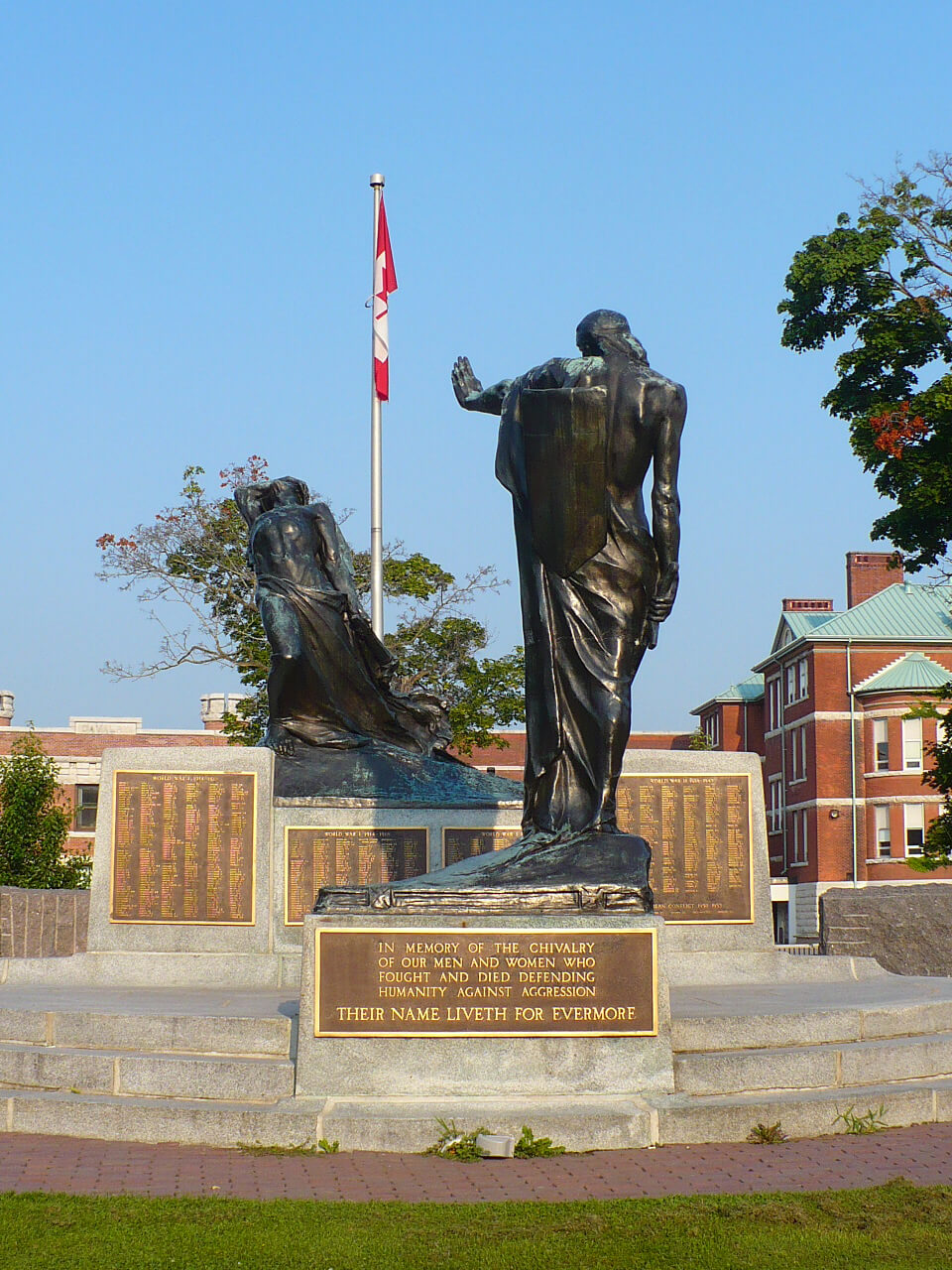
Walter S. Allward, Peterborough War Memorial, 1921–29
Bronze and granite
Confederation Park, 501 George Street North, Peterborough, Ontario
Allward’s war memorial in Peterborough presents two allegorical figures in bronze, each on a white granite block, symbolizing the triumph of civilization over barbarism. The figure representing Civilization stands in a commanding position with a sword in one hand and the other hand outstretched toward Strife, who is retreating with one arm covering his face in despair and the other carrying an extinguished torch. The monument is similar in theme and style to the Stratford War Memorial, 1919–22, but with a heightened sense of drama. Another difference is that the Peterborough War Memorial was designed from the outset for a city park, providing Allward with the opportunity to design both the approach to the work and the surrounding landscape, much as he would do on a larger scale with the Vimy Memorial, 1921–36.
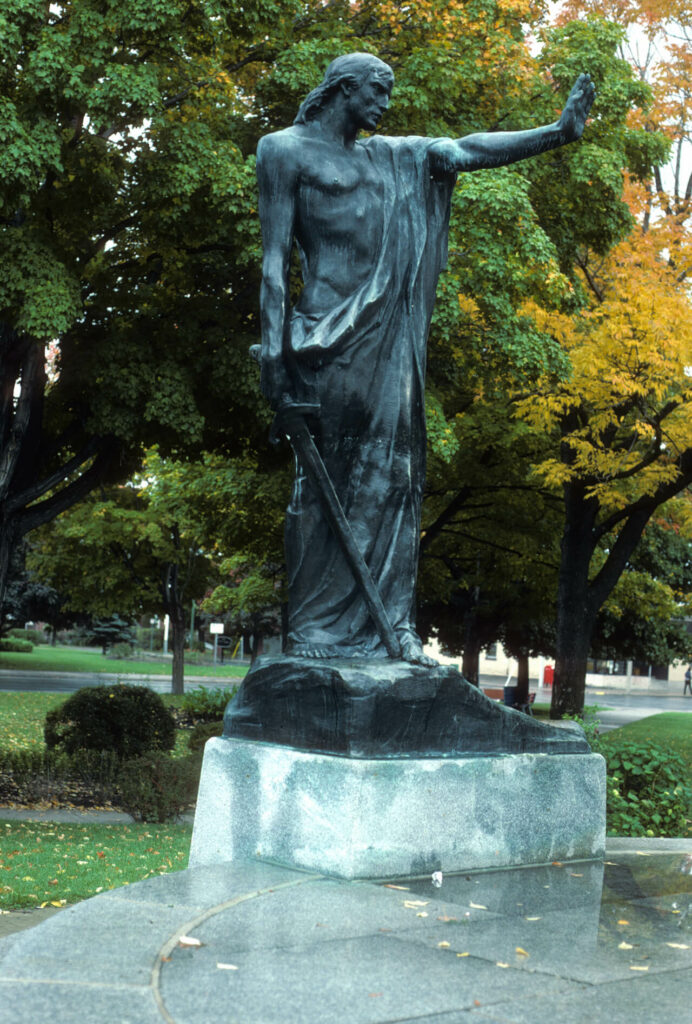
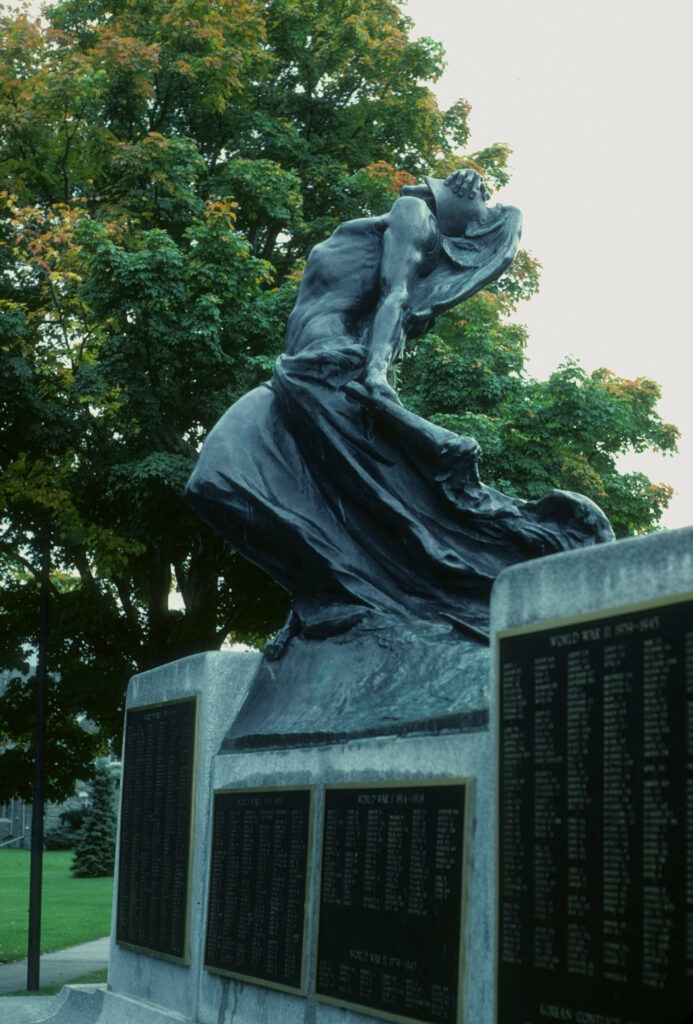
Efforts to erect a war memorial in Peterborough had been initiated by the local branch of the Canadian Red Cross in late 1919. The project was carried to fruition by the Citizen’s Memorial Committee, which was formed in December 1920. Central Park (later renamed Confederation Park) was the chosen site, having served as a gathering point for soldiers leaving to fight in Europe and arriving home. As with similar projects throughout the country, funding was raised mainly through small contributions from local residents. Allward’s final design was approved in June 1921.
Committed to completing the Stratford monument, Allward was unable to finish the work in Peterborough before departing for Europe in June 1922. In 1925 he suggested that the project be further delayed so that he could devote all his energy to the Vimy Memorial. The following year he gave in to pressure from the committee and hired the British sculptor Gilbert Bayes (1872–1953) to finish the two bronze figures in London. Working from Allward’s half-size models, Bayes completed the full-size figures and supervised the preparation of the plaster versions, which were sent to the Thames Ditton Foundry in Surrey, England, for casting. The site was excavated under the direction of Allward’s son Hugh in May 1928. The stepped granite base and the pedestals, one of which is inscribed with the names of those who died in the First World War, were put in place soon after, followed by the installation of the bronze figures.
Dedicated to the 717 local men and women killed overseas, the memorial was unveiled on June 30, 1929, by Sir Arthur Currie, former commander of the Canadian Corps, and the Reverend Canon F. G. Scott, Archdeacon of Quebec and Director of Canadian Army Chaplain services. Colonel H.C. Osborne of the Imperial War Graves Commission also spoke at the event, describing the monument as “a valuable contribution to Canadian art and a memorial that will be increasingly cherished as the years pass.”
Allward’s design was last modified in 1978, when bronze plaques with the names of the dead from the Second World War and the Korean War were added to the granite blocks rising from the base. Bronze plaques with the names of those who died in the First World War were also installed, covering the original engraved names.

 About the Author
About the Author
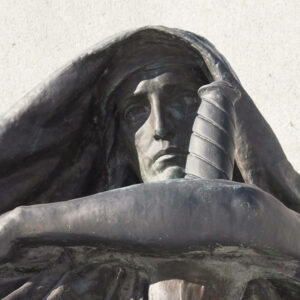 More Online Art Books
More Online Art Books
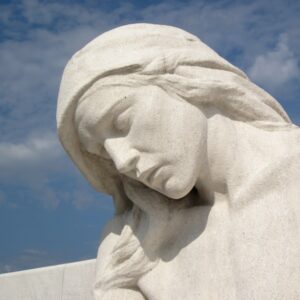 Acknowledgements
Acknowledgements